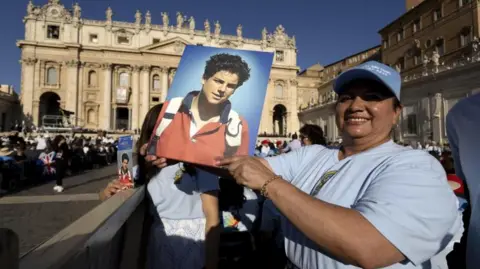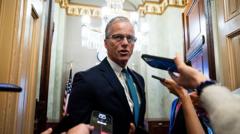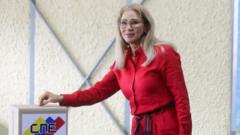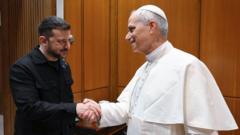The Vatican's conclave is in full swing as cardinals enter the second day of their process to elect a new pope following the passing of Pope Francis. With Thursday’s voting expected to take place, tensions are high as the 133 cardinals, gathered in the Sistine Chapel, navigate intricate political dynamics and pressing global issues.
After a lack of consensus on day one, the cardinals, held in strict secrecy without phones or internet access, must unite under a two-thirds majority to select the next leader of the world’s 1.4 billion Roman Catholics. The selections come at a fraught time, with the church facing pressures from financial strains, the fallout of historic scandals, and a push for modernization clashing with traditionalist views.
This conclave could prove to be one of the most complex in recent history, as many of the cardinals were appointed under Francis, introducing new factions and priorities that could hinder swift decision-making. With estimates suggesting a potential lengthier wait for a new pontiff, Cardinal Timothy M. Dolan from New York humorously noted his preparations for a prolonged conclave by packing ample peanut butter.
Voting routines are carefully structured. If the first session yields no decision, subsequent ballots will go forward throughout the day with smoke signals indicating whether progress has been made—black smoke for no consensus and white smoke when a new pope is elected.
Central to the underlying tensions is a crucial decision regarding the church’s future direction. As cardinals weigh candidates, they must consider a split between progressive elements advocating for further inclusion versus conservatives who seek to horizon back to more traditional stances championed by previous popes.
Predicting the outcome remains speculative, though top contenders for the papacy are rumored to include figures like Cardinal Pietro Parolin and Cardinal Luis Antonio Tagle. Despite varying opinions on the conclave's duration, some experts stress the need for a decisive choice soon, maintaining the church's stability as it heads deeper into challenging waters.
With the atmosphere in the chapel charged with anticipation, the world watches closely as the voting continues today, poised for the emergence of a leader capable of guiding the Catholic Church through its multifaceted crises and into a new chapter of its storied history.
After a lack of consensus on day one, the cardinals, held in strict secrecy without phones or internet access, must unite under a two-thirds majority to select the next leader of the world’s 1.4 billion Roman Catholics. The selections come at a fraught time, with the church facing pressures from financial strains, the fallout of historic scandals, and a push for modernization clashing with traditionalist views.
This conclave could prove to be one of the most complex in recent history, as many of the cardinals were appointed under Francis, introducing new factions and priorities that could hinder swift decision-making. With estimates suggesting a potential lengthier wait for a new pontiff, Cardinal Timothy M. Dolan from New York humorously noted his preparations for a prolonged conclave by packing ample peanut butter.
Voting routines are carefully structured. If the first session yields no decision, subsequent ballots will go forward throughout the day with smoke signals indicating whether progress has been made—black smoke for no consensus and white smoke when a new pope is elected.
Central to the underlying tensions is a crucial decision regarding the church’s future direction. As cardinals weigh candidates, they must consider a split between progressive elements advocating for further inclusion versus conservatives who seek to horizon back to more traditional stances championed by previous popes.
Predicting the outcome remains speculative, though top contenders for the papacy are rumored to include figures like Cardinal Pietro Parolin and Cardinal Luis Antonio Tagle. Despite varying opinions on the conclave's duration, some experts stress the need for a decisive choice soon, maintaining the church's stability as it heads deeper into challenging waters.
With the atmosphere in the chapel charged with anticipation, the world watches closely as the voting continues today, poised for the emergence of a leader capable of guiding the Catholic Church through its multifaceted crises and into a new chapter of its storied history.






















